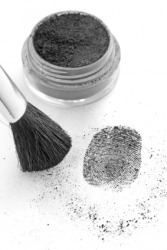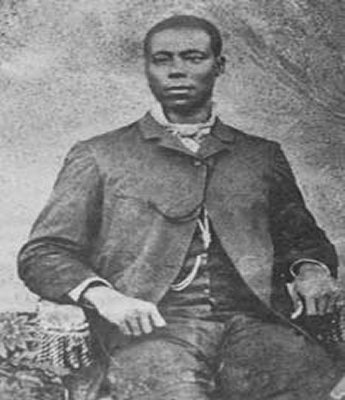History of Fingerprinting
Fingerprints have been around as long as we have- only recently have we been analyzing them. It is impossible to commit a crime without leaving trace amounts of evidence, and fingerprints are a primary testimonial. Ancient Babylonians and Chinese have been using their fingerprints as authorization methods for centuries, but in 1880 they were on the road to revolution in criminal identification. Henry Faulds came across fingerprints on pieces of ancient clay and in doing so sparked the first investigation of prints. Faulds wrote to Charles Darwin, asking for assistance in creating the world’s first “fingerprint classification system”. Darwin refused but passed on the request to Sir Francis Galton, who began gathering fingerprint samples. Soon he reached 8,000 prints and published a book in 1982 called “Fingerprints”, which outlined the basic patterns of loops, arches, and whorls and concluded that no two fingerprints are exactly alike. This fueled a scattering of similar projects by various scientists, policemen, and researchers. Finally in 1902, the first criminal case was solved using fingerprinting. On the morning of September 19, 1910, Clarence Hiller woke up and found that a light near his daughter’s bedroom was not burning. He came upon a stranger in the house and engaged in a struggle, resulting in both men falling down the stairs. Two shots were heard and Mr. Miller called for help. At Ms. Hiller came downstairs to find her husband dead. The criminal had climbed in through a window, using a railing for support. Unfortunately for him, the railing had been recently painted, and he left four fingerprints on the wet surface. At 2:38 a.m., Thomas Jennings was spotted by police and was questioned. Giving conflicting statements, he was searched and found with a loaded revolver. He was arrested and taken to jail. During the trial, a fingerprint expert examined the prints on the rail and Jennings’ fingerprint card and concluded that he was indeed guilty. Jennings was sentenced to death and hanged. In 1903, the use of fingerprints was adopted by the FBI.

Techniques/Chemicals Used to Develop Prints
 Dusting is the best way to develop fingerprints on hard, nonabsorbent surfaces. If the material is dark, then a talcum-based powder is best, due to the light nature of the mineral. Likewise, if the potential fingerprint lies on a light surface, than a dark carbon-based powder will be the most efficient. After the powder has been gently tapped over the surface to expose the print, it is lifted with tape, affixed to a fingerprinting card, and analyzed. For fingerprints on nonabsorbent surfaces, chemicals are used to bring the prints out. The most commonly used method for chemically developed prints is iodine fuming. Iodine is a crystal that will transform into a vapor when heated. The material is placed in an enclosed area and is exposed to iodine vapor. The vapor will then bring out the fingerprint, making it visible to the naked eye. However, once the process has ceased, the print will fade again. To stop this, the print is sprayed with a starch/ water solution, and will then last for weeks. Another way is brushing the material with silver nitrate. The fingerprint is then developed with an exposure to ultraviolet light. A print will appear as reddish-brown or black.
Dusting is the best way to develop fingerprints on hard, nonabsorbent surfaces. If the material is dark, then a talcum-based powder is best, due to the light nature of the mineral. Likewise, if the potential fingerprint lies on a light surface, than a dark carbon-based powder will be the most efficient. After the powder has been gently tapped over the surface to expose the print, it is lifted with tape, affixed to a fingerprinting card, and analyzed. For fingerprints on nonabsorbent surfaces, chemicals are used to bring the prints out. The most commonly used method for chemically developed prints is iodine fuming. Iodine is a crystal that will transform into a vapor when heated. The material is placed in an enclosed area and is exposed to iodine vapor. The vapor will then bring out the fingerprint, making it visible to the naked eye. However, once the process has ceased, the print will fade again. To stop this, the print is sprayed with a starch/ water solution, and will then last for weeks. Another way is brushing the material with silver nitrate. The fingerprint is then developed with an exposure to ultraviolet light. A print will appear as reddish-brown or black.
 Dusting is the best way to develop fingerprints on hard, nonabsorbent surfaces. If the material is dark, then a talcum-based powder is best, due to the light nature of the mineral. Likewise, if the potential fingerprint lies on a light surface, than a dark carbon-based powder will be the most efficient. After the powder has been gently tapped over the surface to expose the print, it is lifted with tape, affixed to a fingerprinting card, and analyzed. For fingerprints on nonabsorbent surfaces, chemicals are used to bring the prints out. The most commonly used method for chemically developed prints is iodine fuming. Iodine is a crystal that will transform into a vapor when heated. The material is placed in an enclosed area and is exposed to iodine vapor. The vapor will then bring out the fingerprint, making it visible to the naked eye. However, once the process has ceased, the print will fade again. To stop this, the print is sprayed with a starch/ water solution, and will then last for weeks. Another way is brushing the material with silver nitrate. The fingerprint is then developed with an exposure to ultraviolet light. A print will appear as reddish-brown or black.
Dusting is the best way to develop fingerprints on hard, nonabsorbent surfaces. If the material is dark, then a talcum-based powder is best, due to the light nature of the mineral. Likewise, if the potential fingerprint lies on a light surface, than a dark carbon-based powder will be the most efficient. After the powder has been gently tapped over the surface to expose the print, it is lifted with tape, affixed to a fingerprinting card, and analyzed. For fingerprints on nonabsorbent surfaces, chemicals are used to bring the prints out. The most commonly used method for chemically developed prints is iodine fuming. Iodine is a crystal that will transform into a vapor when heated. The material is placed in an enclosed area and is exposed to iodine vapor. The vapor will then bring out the fingerprint, making it visible to the naked eye. However, once the process has ceased, the print will fade again. To stop this, the print is sprayed with a starch/ water solution, and will then last for weeks. Another way is brushing the material with silver nitrate. The fingerprint is then developed with an exposure to ultraviolet light. A print will appear as reddish-brown or black.Procedures for Lifting Prints
2. Apply a brush to the powder, and gently tap handle over potential fingerprint.
3. Run the brush lightly in short, quick strokes over the fingerprint.
4. Press a piece over the print, and pull away in one fluid motion.
5. Apply tape to card to be entered into a fingerprint processing machine.
| Tented Arch |
| Radial Loop |
| Central Pocket Whorl |
 |
| Double Loop Whorl |
 |
| Plain Whorl |
 |
| Accidental Whorl |



